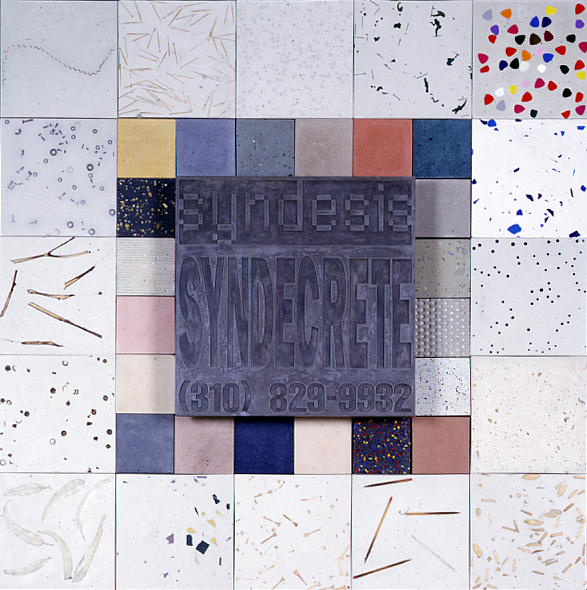material development - syndecrete
David Hertz invented Syndecrete as a lightweight, durable, and environmentally responsible alternative to concrete. Utilizing materials such as post-consumer carpeting and waste fly-ash from electric plants, Syndecrete has double the compressive strength of traditional concrete with only half the weight. This allows Syndecrete to have creative uses such as signage, wall tile, decorative works, and even furniture. Furthermore, by incorporating recycled material into the mixture, it can form a stylish terrazzo that reflects the identity of the client: for example, vinyl records, CDs, and audio cassettes were saved from the landfill to be used for the Rhino Records floor. Likewise, Patagonia incorporated factory reject zippers and broken buttons in their Tokyo store’s Syndecrete floor.












